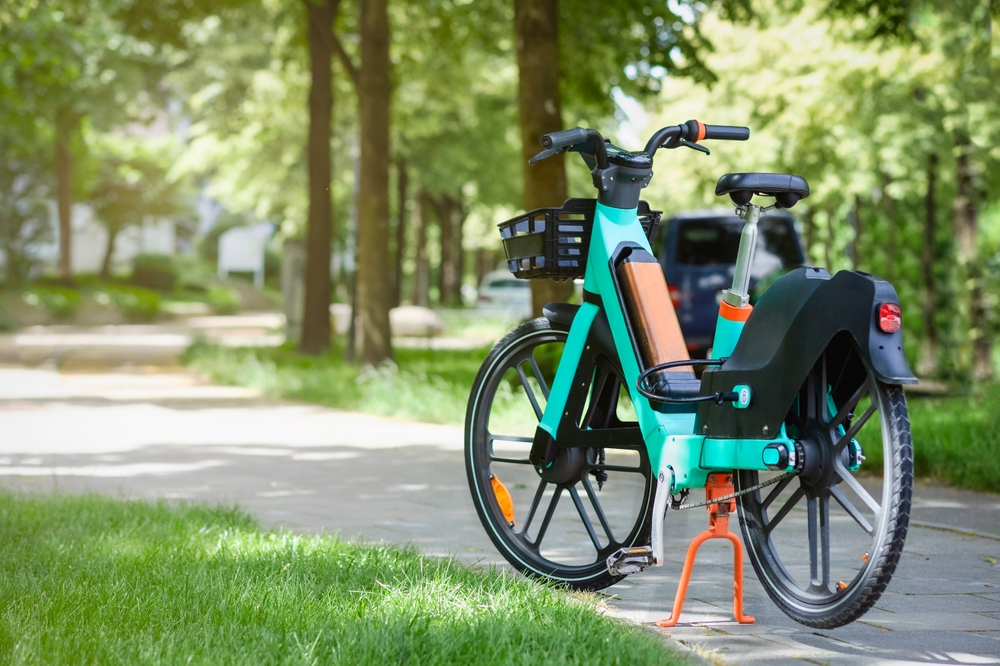In a world where environmental concerns are escalating, innovation is lighting the way for sustainable solutions. From reducing carbon footprints to improving biodiversity, these innovations are proof that creativity and technology can offer the planet a fighting chance. Let’s explore 14 groundbreaking ideas that are making waves in environmental circles and could inspire you to join the movement for a healthier planet.
1. Solar Paint

Imagine painting your house and simultaneously harnessing solar energy. That’s exactly what solar paint offers — a coating that can generate electricity from sunlight. Unlike traditional solar panels, solar paint can be applied to any surface, making it a versatile solution for urban and rural areas alike. It’s a game-changer in renewable energy, providing an accessibility that panels can’t match.
The University of Melbourne has been at the forefront of this research, showing promising results (source: Melbourne University study). Their studies indicate that solar paint could produce enough energy to power the average home, potentially transforming the energy sector. It’s a step towards democratizing green energy, allowing more people to participate in sustainable living without the need for costly installations.
2. Vertical Farms

With shrinking arable land and a growing population, vertical farms are stepping in as innovative spaces for food production. These farms stack crops in indoor environments, using LED lights instead of sunlight. Controlled conditions mean they use 95% less water than traditional farming and can produce crops year-round. This not only boosts food security but also reduces the carbon footprint associated with transporting food.
You may have seen these futuristic farms in urban areas, turning unused spaces into hubs of greenery. They’re especially beneficial in cities, where land is scarce but demand for fresh produce is high. Vertical farms are helping to bring food production closer to consumers, reducing food miles and supporting urban sustainability. The result is fresher produce available at a lower environmental cost, benefiting both people and the planet.
3. Water-from-Air Technology

Access to clean water is a fundamental need, yet millions worldwide lack it. Enter water-from-air technology, which extracts moisture from the atmosphere to provide potable water. This innovation uses solar energy and advanced condensation techniques to generate drinking water even in arid regions. It’s an elegant solution that taps into the natural hydrological cycle without depleting local water resources.
Experts like those at the Massachusetts Institute of Technology have developed systems that can generate liters of water each day from thin air (source: MIT research). This technology is especially crucial in remote areas, where infrastructure for water delivery is lacking. By offering a scalable solution to water scarcity, it represents a lifeline for communities facing significant water stress. Such innovations provide hope that global water crises can be effectively managed.
4. Biodegradable Plastics

The plastic problem is one of the most pressing environmental issues today. Biodegradable plastics offer a promising alternative by breaking down naturally in the environment. Unlike traditional plastics, they are made from renewable resources like corn starch, which decomposes into non-toxic materials. This innovation is crucial in reducing the overwhelming volume of plastic waste polluting our landfills and oceans.
As you likely know, single-use plastics are a major contributor to pollution. Biodegradable options are not just about reducing waste but also about lessening the reliance on fossil fuels for plastic production. They’re a step forward in making everyday items more sustainable, offering the convenience of plastic without the ecological guilt. Over time, embracing biodegradable plastics could signal a significant reduction in the environmental impact of human activity.
5. Ocean Cleanup Systems

Our oceans are drowning in plastic waste, but ocean cleanup systems are throwing them a lifeline. These systems use a combination of nets and filtration devices to collect debris from the ocean surface. The goal is to target large waste patches, like the Great Pacific Garbage Patch, which are harming marine life and ecosystems. It’s a monumental task, but one that’s essential for a healthier planet.
The Ocean Cleanup, a nonprofit organization, has been pioneering this effort (source: The Ocean Cleanup project). Their technologies are designed to capture plastics of all sizes while allowing marine life to pass unharmed. As cleanup initiatives grow, they bring hope for the restoration of ocean biodiversity. These efforts also encourage a greater awareness of the need to prevent plastic from reaching our oceans in the first place.
6. Smart Grids

Traditional power grids are quickly becoming outdated, but smart grids are stepping in to enhance energy efficiency. They use digital technology to monitor and manage electricity flow, adjusting to demand in real-time. By optimizing energy distribution, smart grids help reduce wastage and integrate renewable energy sources more seamlessly. This makes power systems more resilient and environmentally friendly.
From your home thermostat to large-scale solar farms, smart grids connect diverse energy sources and consumers. They represent a shift towards more sustainable energy consumption, reducing the reliance on fossil fuels. As more cities adopt smart grids, the potential for significant reductions in greenhouse gas emissions grows. It’s an intelligent approach to energy management that aligns with the urgent need for environmental action.
7. Reforestation Drones

Planting trees is one of the simplest ways to combat climate change, but reforestation drones are taking this concept to new heights. These drones are designed to plant seed pods in the ground at a rate far faster than human hands alone. They can access difficult terrains and cover large areas efficiently, making large-scale reforestation projects more feasible.
UK-based company BioCarbon Engineering is leading the charge with drone technology capable of planting thousands of trees per day (source: BioCarbon Engineering). By automating the process, these drones address deforestation at a scale not previously possible. This technology not only accelerates reforestation efforts but also supports wildlife habitats and biodiversity. It’s a marriage of technology and nature, offering hope for restoring forests worldwide.
8. Algae Biofuel

While biofuels have been around for a while, algae biofuel is a standout contender in the race for sustainable energy. Algae can be grown in water bodies unsuitable for agriculture, and it absorbs carbon dioxide as it grows. Once harvested, it can be converted into a clean-burning fuel that powers everything from cars to jets. This makes algae an attractive alternative to fossil fuels, with the potential to cut emissions significantly.
The beauty of algae biofuel lies in its dual role of reducing greenhouse gases while providing a renewable energy source. You might wonder how scalable this solution is, but advances in technology are making it increasingly viable. As research continues, the hope is that algae biofuel will become a mainstream energy source, reducing dependence on traditional oil. It’s a green dream that could transform the future of energy across the globe.
9. Electric Public Transport

Electric vehicles are making headlines, but electric public transport could have an even bigger impact. Buses and trains powered by electricity offer a clean alternative to diesel-powered fleets, reducing urban air pollution. Cities worldwide are investing in this technology, seeing it as a way to reduce carbon footprints while enhancing public transport systems. It’s a crucial step in promoting sustainable urban living.
You’ve probably seen electric buses gliding quietly through city streets, a stark contrast to their noisy, polluting predecessors. They offer a smoother ride and lower maintenance costs, making them economically attractive as well. By transitioning to electric public transport, cities can significantly lower emissions and improve air quality. It’s a change that benefits commuters and the environment alike, paving the way for greener cities.
10. Zero-Waste Packaging

The packaging industry is ripe for innovation, and zero-waste packaging is leading the charge. This approach eliminates excess materials and focuses on using recyclable or compostable materials. It’s about creating a circular economy, where products and packaging are reused, recycled, or biodegraded without harming the environment. Companies across the globe are adopting this mindset, recognizing the environmental and economic benefits.
Think about your last online order — did it come with layers of unnecessary packaging? Zero-waste packaging aims to change this norm, offering sustainable alternatives that minimize impact. It’s not just about reducing waste but also about changing consumer habits, encouraging people to value sustainability in their purchases. As more brands embrace zero-waste, the collective impact can lead to a significant reduction in global waste.
11. E-Bikes

Electric bikes, or e-bikes, are not just a trend — they’re a revolution in personal transportation. They offer an eco-friendly alternative to cars, especially for short commutes and city travel. E-bikes combine pedal power with battery assistance, making cycling accessible to people of various fitness levels. This innovation is key in reducing traffic congestion and urban pollution, offering a cleaner, greener way to navigate cities.
If you’ve ever hopped on an e-bike, you know the joy of effortless cycling up a hill. They provide convenience without the environmental impact of cars, making them a popular choice for the environmentally conscious. As cities adapt to support more cyclists, the potential for reducing carbon emissions grows. E-bikes encourage a healthier lifestyle while contributing to a more sustainable urban environment.
12. Sustainable Fashion

Fashion is notorious for its environmental footprint, but sustainable fashion is turning the tide. It focuses on eco-friendly materials, ethical production methods, and reducing waste. Brands are increasingly shifting towards organic fabrics, biodegradable dyes, and fair-trade practices. This movement not only addresses environmental concerns but also highlights social responsibility within the fashion industry.
You’ve probably noticed the rise in thrift shopping and sustainable collections from major brands. It’s an encouraging trend that reflects a growing demand for transparency and responsibility in fashion. By choosing sustainable fashion, consumers empower a shift towards more mindful consumption. Over time, these choices can lead to significant environmental benefits, proving that style and sustainability can go hand in hand.
13. Carbon Capture Technology

Carbon capture technology offers a way to reduce greenhouse gas emissions by trapping carbon dioxide at its source. This captured carbon can then be stored underground or used in various industrial applications. It’s a promising solution for industries that are difficult to decarbonize, such as cement and steel production. By capturing emissions before they reach the atmosphere, this technology helps mitigate climate change.
If you’re wondering about its feasibility, many companies are already investing in carbon capture as part of their sustainability strategies. The advancement of this technology could revolutionize how industries manage emissions, providing a bridge to a low-carbon future. It’s an essential tool in the fight against climate change, offering a practical solution to reduce industrial carbon footprints. As technology improves, carbon capture could play a critical role in global emission reduction efforts.
14. Urban Green Spaces

Urban green spaces are a breath of fresh air in concrete jungles, offering environmental and social benefits. These spaces, from parks to green rooftops, help reduce urban heat, improve air quality, and support biodiversity. They provide a refuge for city dwellers, offering space for recreation and relaxation. By integrating nature into urban planning, cities can become more sustainable and livable.
You might have noticed how a walk in a park can lift your spirits after a stressful day. Urban green spaces are not just about aesthetics — they play a crucial role in mental health and community well-being. As cities grow, preserving and expanding these green areas becomes increasingly important. They offer a simple yet effective way to enhance urban environments, promoting a harmonious balance between city life and nature.
